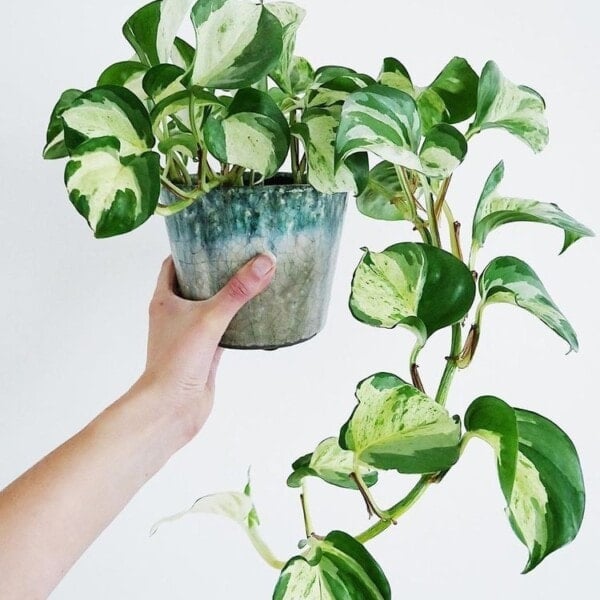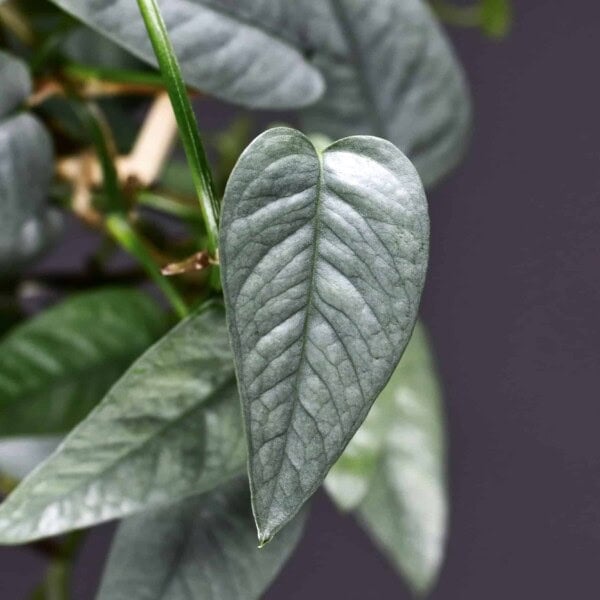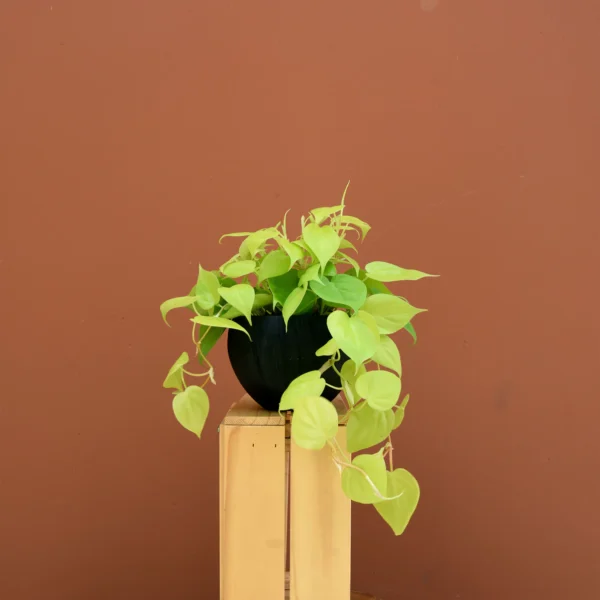Let’s talk about how to decorate living room with plants. Whether you have a small or large living room, many of these tips can be leveraged in any living space, to make a drab and flat interior design burst to life.
I’ve covered lots of options for the best indoor plants, low-light plants, and hanging plants that are easy to take care of but this blog post is really about how to place and arrange plants in your living room for a pro-designer look. It isn’t too complicated but there are some best practices that I know you will find useful. If you are looking for simple tips, tricks, and strategies for how to decorate your living room with indoor plants, read on!
Location, Location, Location is Key for How to Decorate Living Room with Plants
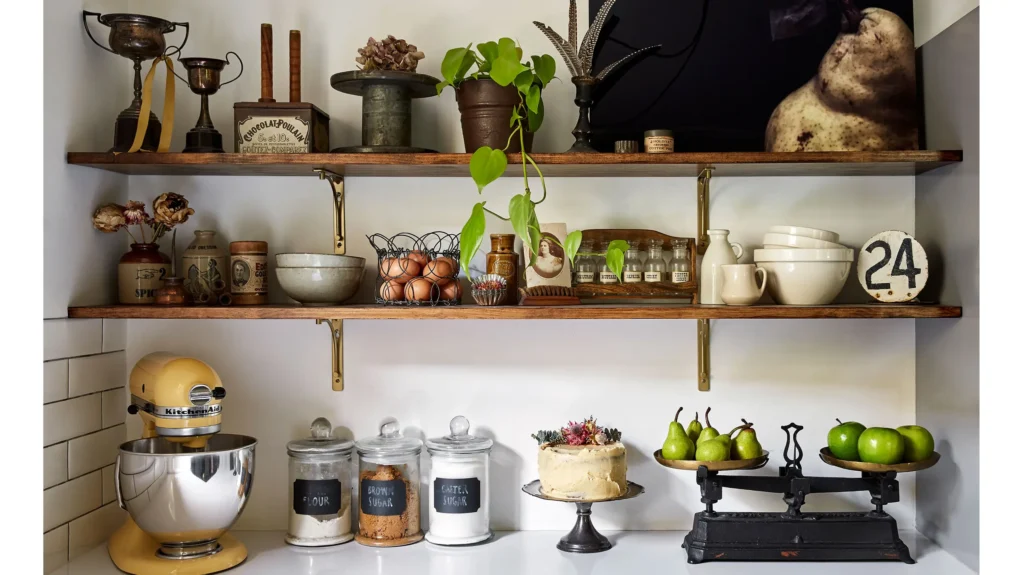
I can not stress this enough with indoor plants. Location is literally everything, especially when you’re working in a small low-light space. Mastering how to decorate living room with plants is about optimizing the floor space you’re working with while paying attention to window light, and drafts. Many plants won’t do well in a windy space, too much direct sunlight, or in a shaded area. Be sure to read your plant’s desired environment and stick to it! Try to understand what plants need before buying them, versus buying a pretty plant only to discover it needs high humidity and having it die in your dry apartment.
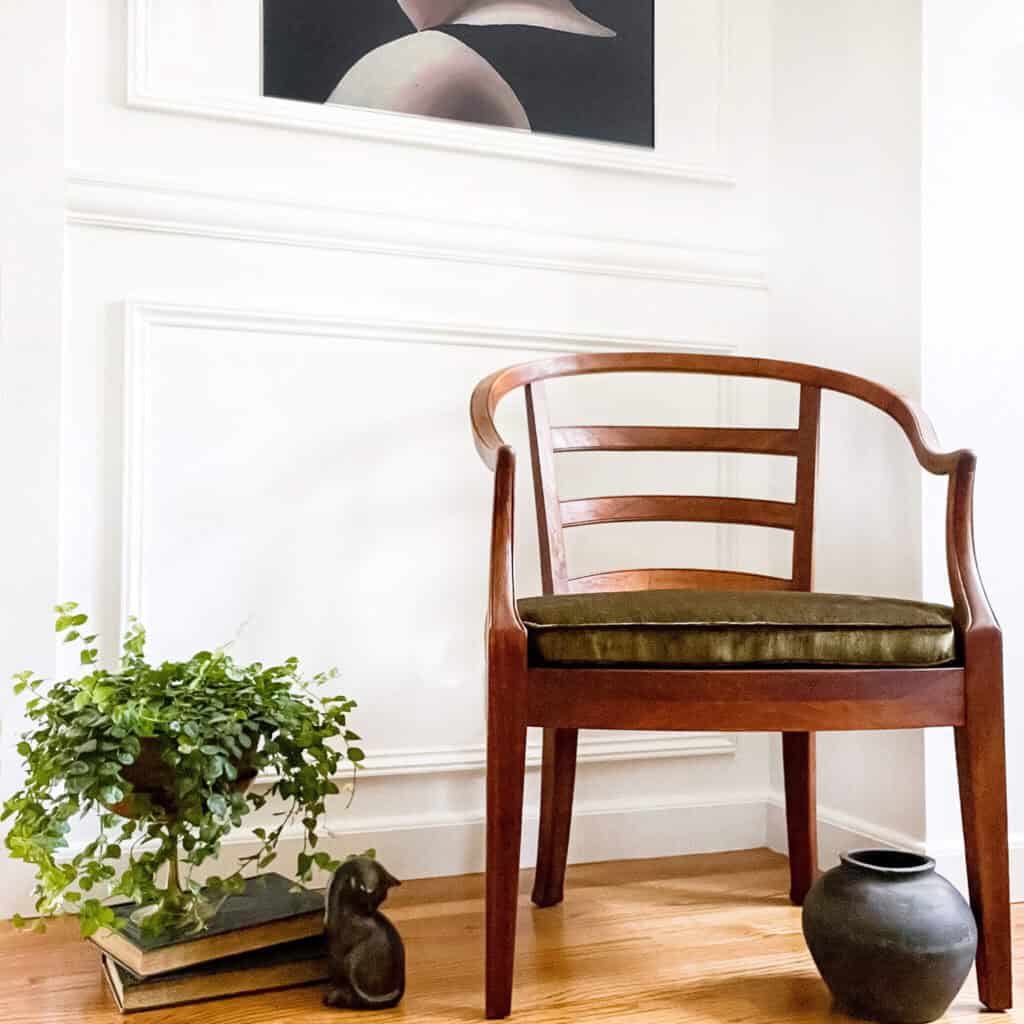
There are many different areas around the room where you can place plants, from filling empty spaces to working around existing fixtures. Below, I’ve listed the best places you can consider putting your favorite greenery.
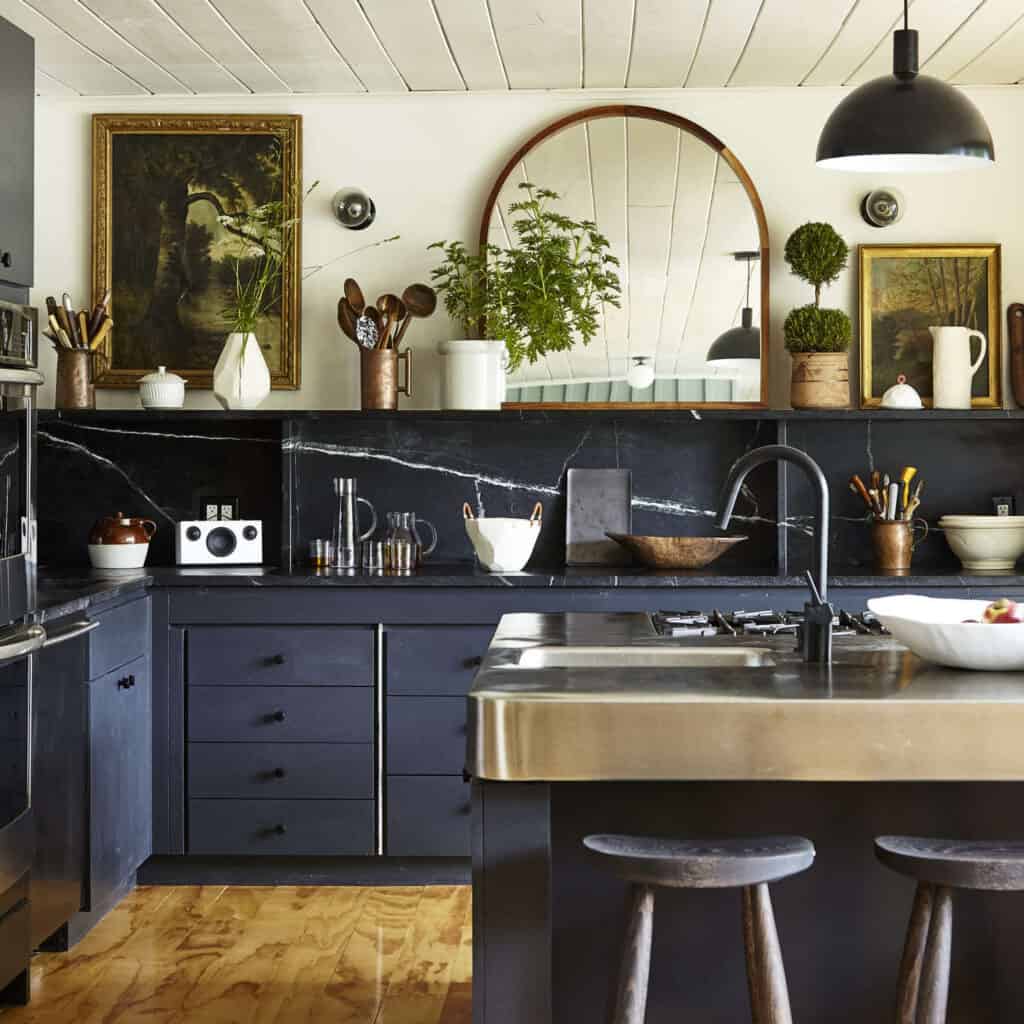
Remember, you’re trying to work your plants into the existing design, not overwhelm the room or place around them. Finish your furniture placement and compliment the furnishings with plants as accents. You can even consider making a mockup before moving any plants in. Too complicated? That’s ok, just stand in the space and look for empty nooks and hard edges that would benefit from a softening with something green! Just allow yourself to “see” what the final room will look like before committing to any changes or placements from your ideal angle of view.
Empty Spaces are Key for How to Decorate Living Room with Plants
Empty spaces are often the easiest and most logical place to place a new plant, especially if the area around it has a lot of negative white paint or texture around it. Think of these zones as a spot to place great wall art in a gallery but use plants instead of art. The green of plants tends to pop with an all-white background or area of painted negative space. Be sure to layer your plants into those spaces and group items in threes for a wow.

Which type of plant you should put in the empty space depends on how large the space is and the types of surface area you are working with. Don’t forget their light needs. Certain plants like the snake plant or the fiddle leaf fig tend to grow vertically, making them ideal for narrow corners and next to furniture, while pathos and pearl plants dangle beautifully on open shelves or as hanging plants that don’t need a ton of natural light. Fill those empty spaces (and walls) while leaving a few blanks for a professional look. three to five is a good rule of thumb.
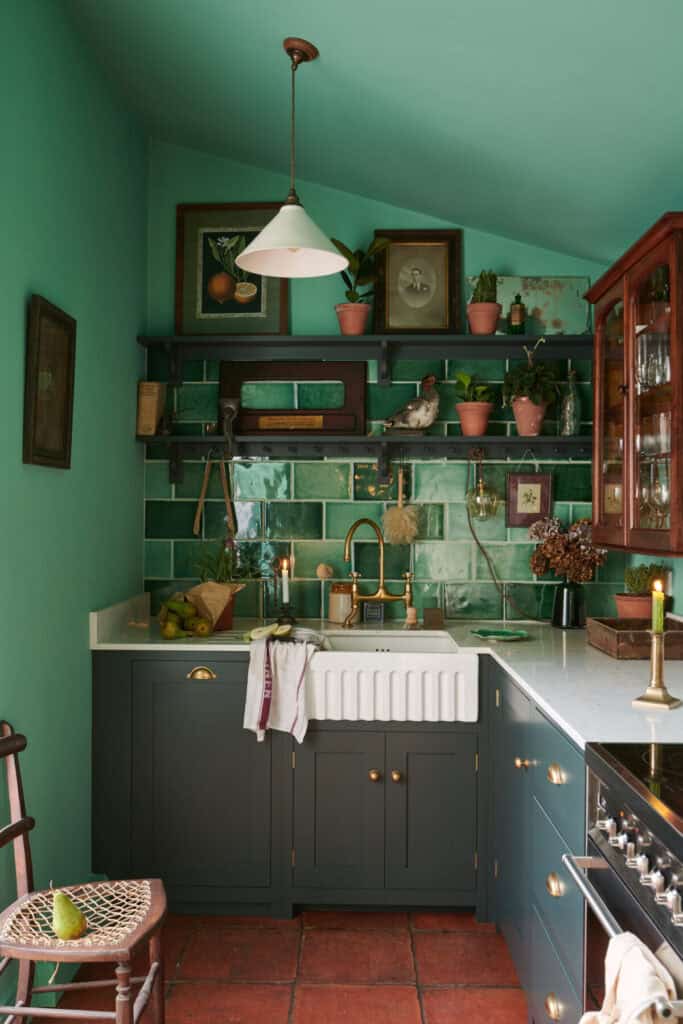
If the space you’re working with is wider, you might want to consider layering in multiple plants. Consider two right next to one another to create the illusion of a larger more full plant when you can’t quite afford a big expensive plant. This is what nurseries do when merchandising plants to you! You should do it as well. Don’t forget to choose plants of different heights and hues for a sophisticated visual impact. You got this!
Shelves Are Perfect for Plants
As mentioned earlier, utilizing open shelving is a fabulous – yes fabulous, way to show off your collection of home accents that always look smart. It’s just the truth. Plants belong on shelves. Here’s a whole blog post on how to style shelves the simple way. Generally speaking, you’ll be limited to smaller plants with this placement option, but—if you have taller or wider enough shelves—you might be able to get away with a bigger plant or two. Placing plants next to or on stacked books, layered in front of art, or distressed vessels is always a win on brass shelving or DIY floating shelves.
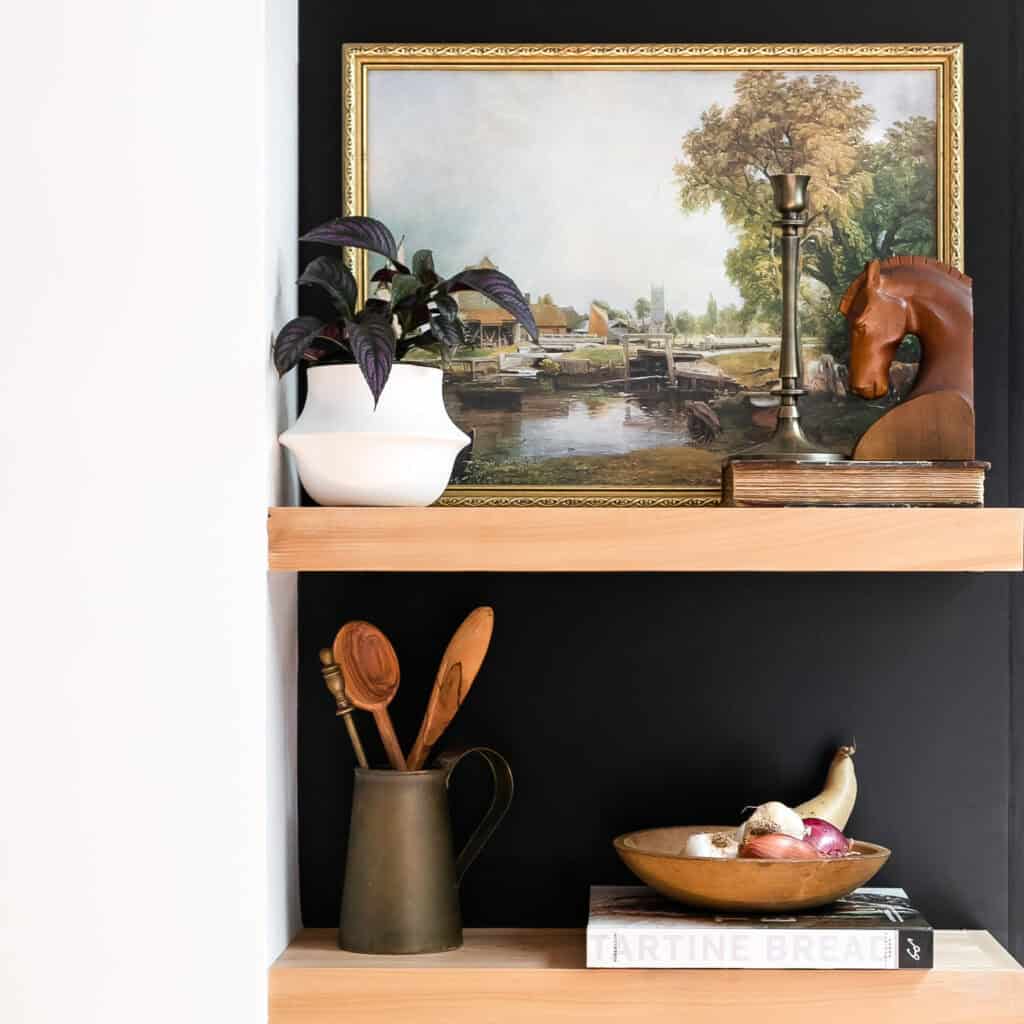
I really like the look of mixing plants in with the current shelf decor, bouncing back and forth between the two placing plants opposite one another on different levels. This helps the plants stand out from their surroundings while keeping the eye dancing about. Again, it’s always a good idea to consider placing viny plants on the ends of your shelves and have them drip down to the next level. It always looks stunning!
Cabinets and Counters are Ideal for Plants
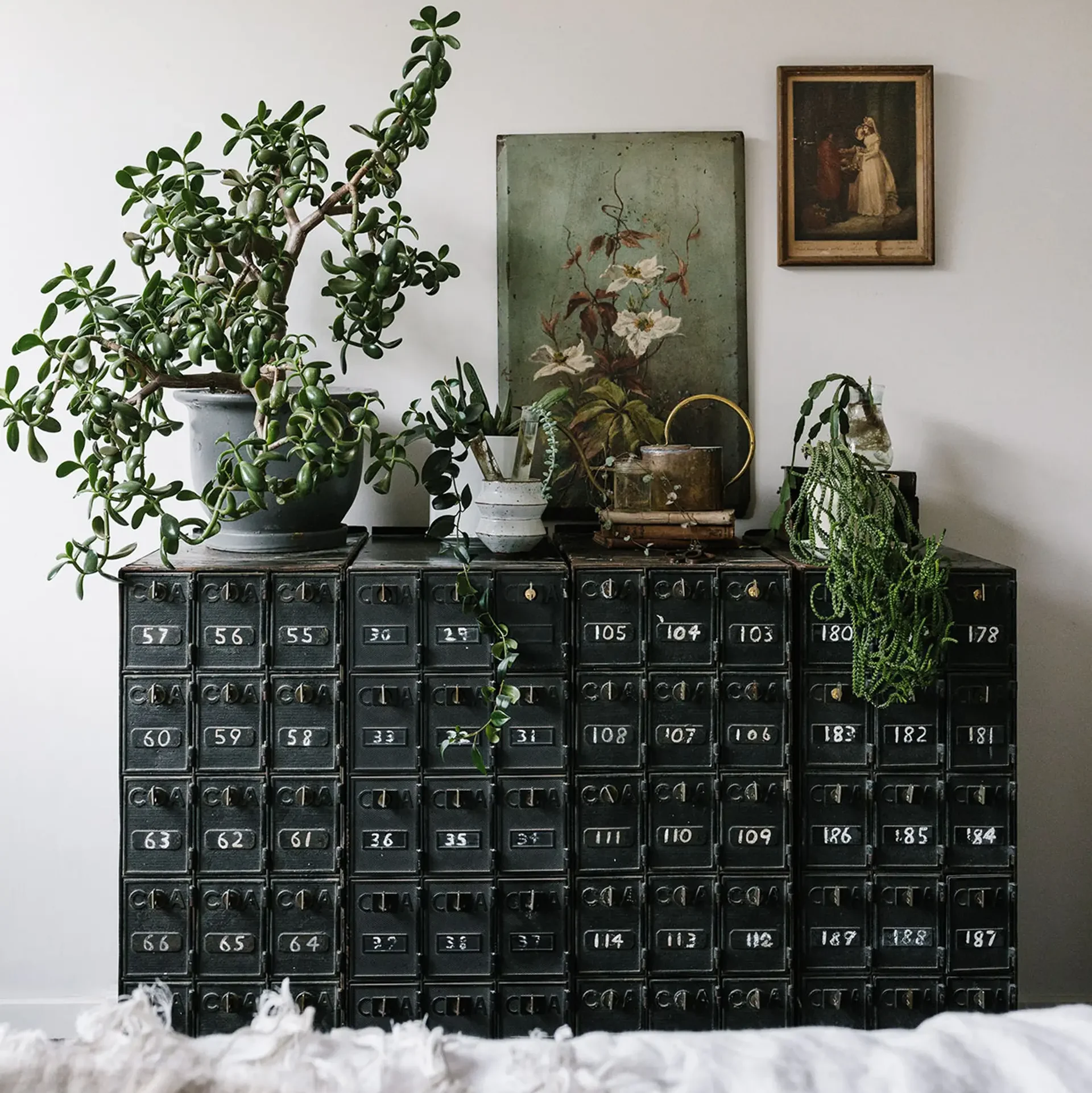
If you have a glass cabinet in your living room then this is definitely a place you should consider placing a few plates. Placing plants in your cabinet is ideal from an interior design perspective, as it allows you to adorn your storage area without needing to make any major changes.
Of course, not everyone has glass cabinets. Fortunately, the top of a regular cabinet is still a great place to put a few of your favorite plants, helping add a bit of life to an otherwise plain storage solution.
How to Decorate Living Room with Plants on a Table
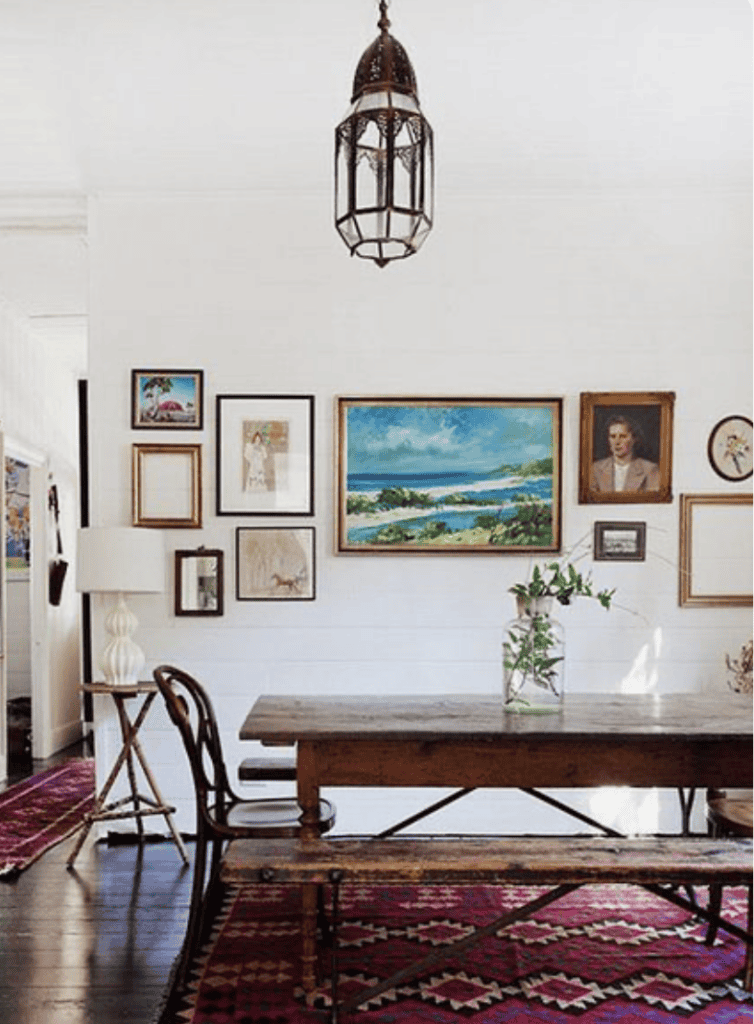
Adding plants is one of the best ways to start styling your table. Since you can find plants in pretty much any size, this approach will work for a large coffee table, side tables, and anything in between.
Placing a potted plant in the center of the table is a classic choice, but I think it’s worth experimenting with other placement options. This is especially true if the table already has things on it, as organizing the plants and items can help add a sense of visual flow to the tabletop.
If you feel like mixing things up, I’d also consider adding a few flowers in glass vases alongside the rest of your table accessories for an additional dash of color.
Terrariums are an Easy Way Solve for How to Decorate Living Room with Plants

This method is a bit less common, but I think it’s an excellent way to make an impressive focal point for your table! A terrarium is simply a sealed vessel that has plants growing inside of it. The type of plant growing inside is up to you.
You have many different options to choose from, but air plants, Chinese money plants, ferns, mosses, and succulents are a few of my favorites.
While you can buy pre-made terrariums, I think it’s a bit more fun to make one yourself. It’s a great afternoon project, especially if you’re looking for something you can do with your kids.
Mantel
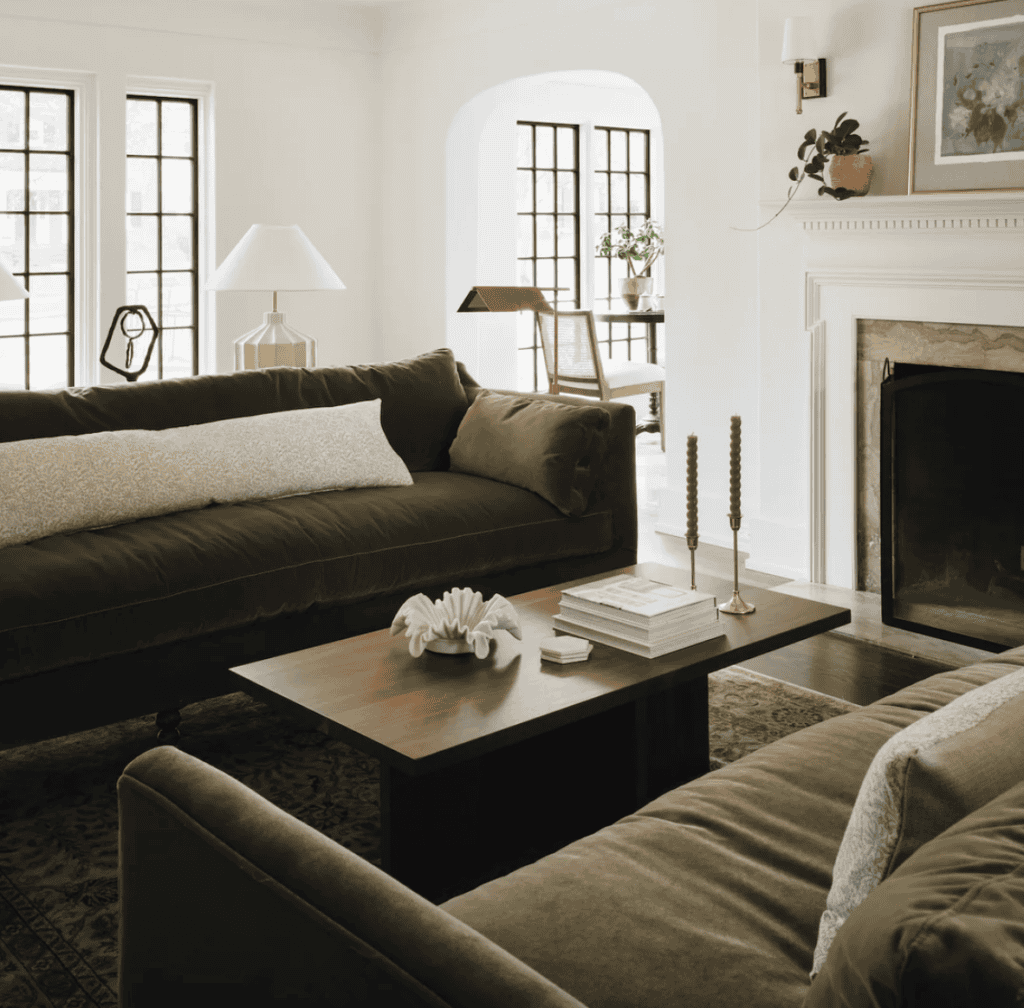
Looking for a way to decorate the mantel above your fireplace? Once again, plants are the perfect fit! Most mantels are fairly big, making them the ideal location for putting larger plants that are too big for your shelves.
The height of the mantle also makes it a good location for trailing, viny plants, so long as the plant itself will be far enough away from any flames. If your mantle doesn’t get a lot of natural sunlight then it may be worth considering placing faux plants instead, as you don’t want to miss out on this excellent placement option simply from a lack of natural lighting!
Windows Make Great Spots for Plants Too
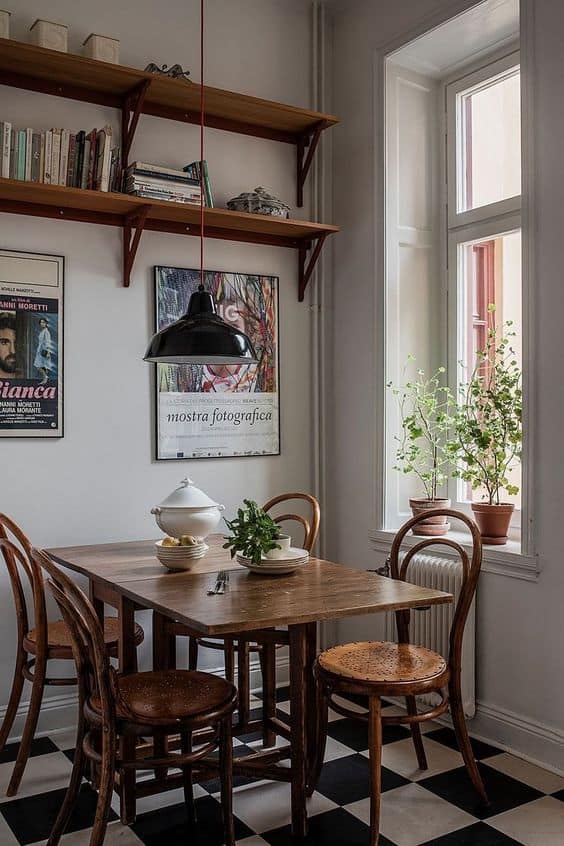
Another classic placement option is the window. More specifically, the window sill. This is the perfect place for small plants, especially if you live in an urban area. While there might not be any plants visible outside, at least you’ll have a bit of greenery to enjoy with your sunlight!
Even if you have plants outside of your window, a few properly placed plants on the window can work amazingly to frame the great outdoors. Just make sure your new decor doesn’t clash with your drapes and you’ll be good to go.
Hang Plants from the Ceiling
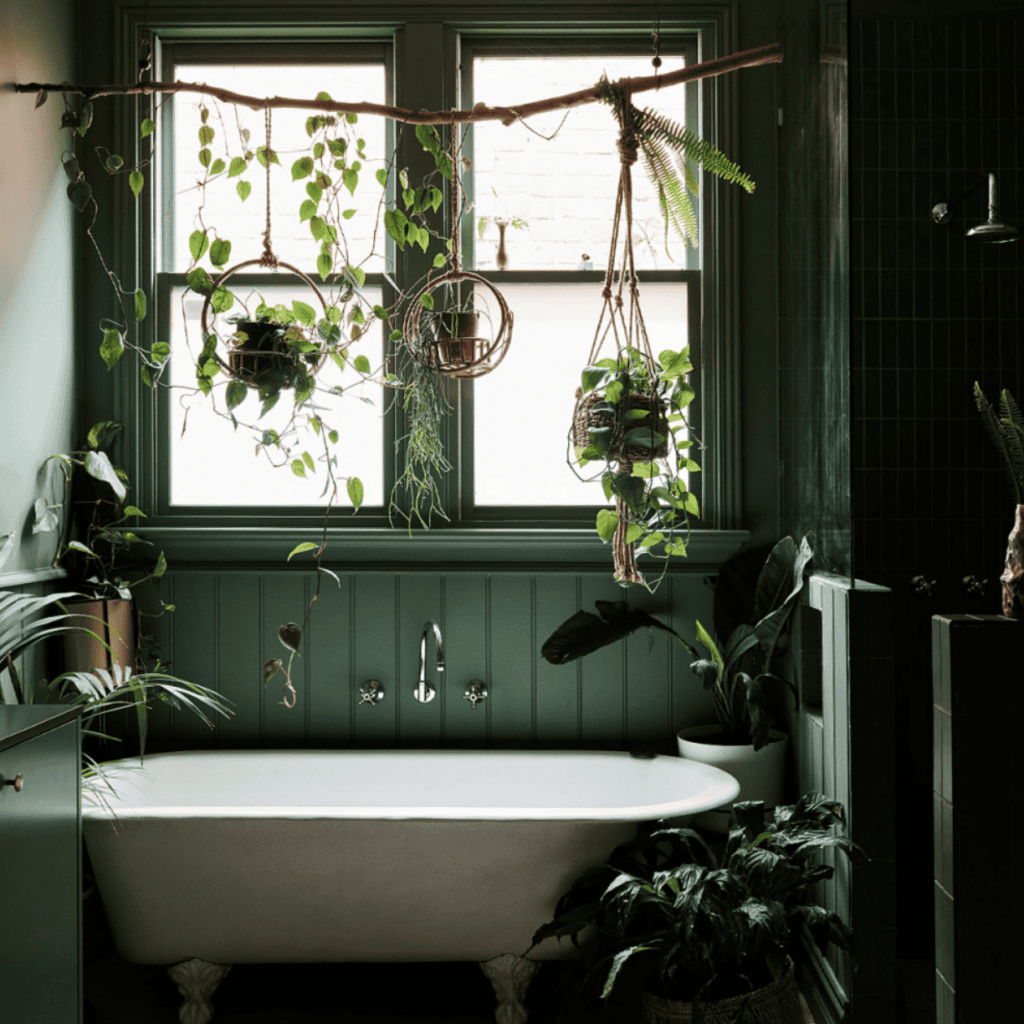
Alright, so this one might not be an option for everyone. Still, if you already have things hanging from your ceiling then adding a hanging plant or two could be just what the room needs to make everything perfect.
For this, trailing plants like the spider plant are a great option. If you have an especially high ceiling, something a bit bigger like a hanging Staghorn could be a more impressive alternative.
If your living room has any hanging light fixtures then you might consider hanging plants from them as well. This works great for small to mid-sized plants. However, weight is an important factor in this setup. The perfect plant is one that can have a lot of visual impact without putting too much stress on the fixtures themselves.
The Lighting Situation
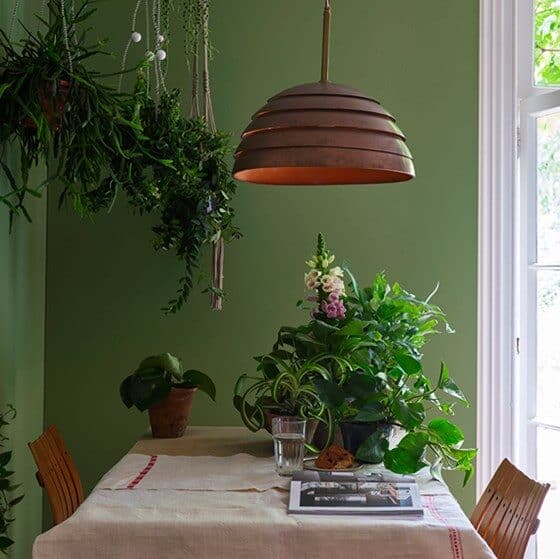
Knowing how to decorate living room with plants won’t do you much good if you’re not taking proper care of your plants. Most of the time, a simple table lamp won’t cut it when it comes to meeting your plant’s lighting needs. Still, every plant has different requirements.
While some can prosper in direct sunlight all day, others prefer indirect or subtle lighting instead. Do your research into the lighting and humidity requirements of any prospective plants you’re considering picking up before adding them in to your living room.
Low-light Areas

There are plenty of low-light plants that might look good in your living room, such as the ferns or the ZZ Plant. So long as the lighting is right, all you’ll need to worry about is the temperature and humidity requirements!
That said, bear in mind that there’s a difference between thriving and surviving. For example, while a Peace Lily can survive low-light situations, it won’t necessarily thrive in this environment. As such, temper your expectations accordingly.
If you’re dealing with an area that doesn’t get any natural light, going with artificial plants like this Faux White Hydrangea might be the best option. As an added bonus, they’re not low-maintenance. There’s no maintenance at all!
Bright Areas Are Ideal Spots to Place Plans – Anthony Perfect Solve for How to Decorate Living Room with Plants
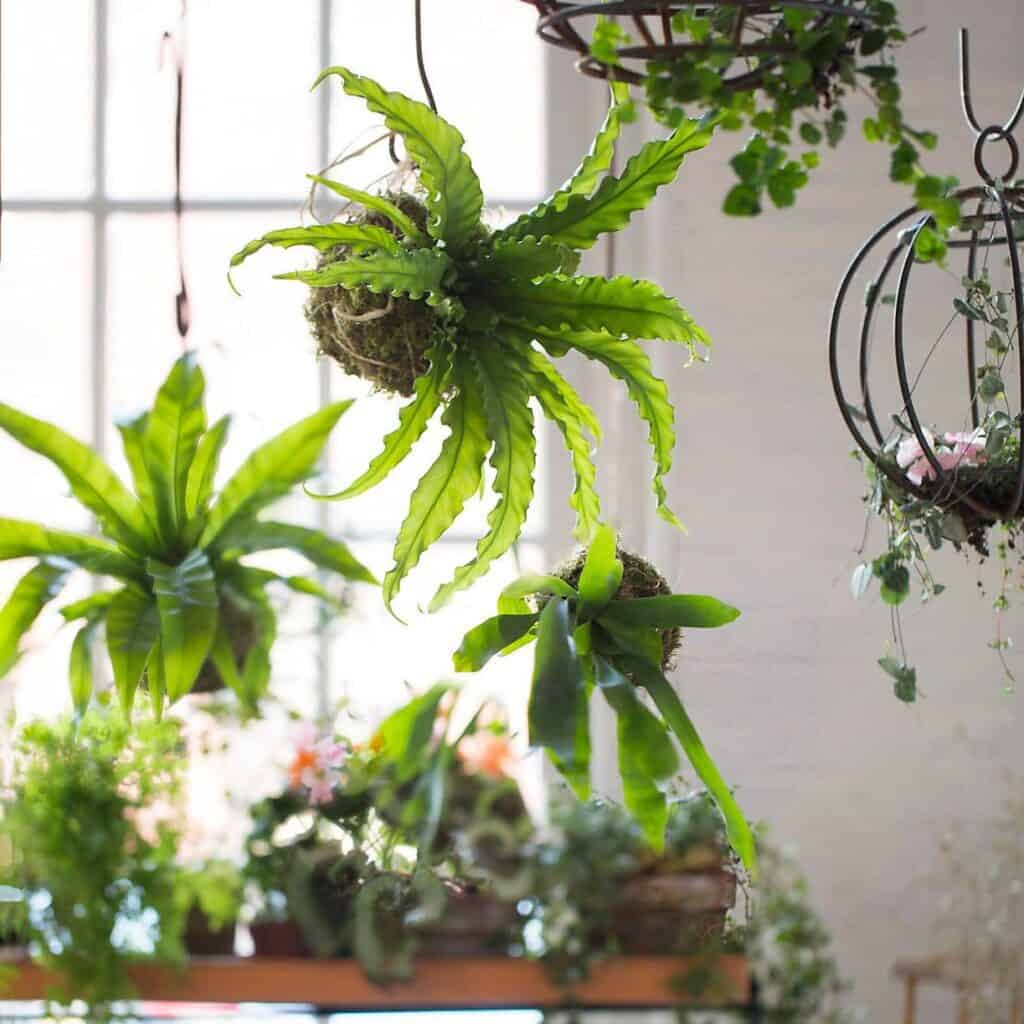
You’ll have a lot of options if you’re looking for plants to put in a bright area. Remember, bright light doesn’t just mean direct sunlight. There are plenty of plants that want bright light but indirect sunlight, so make sure your plant can survive constant sunlight before placing it directly in front of the window.
Plants like Aloe Vera, Gardenia, and Papyrus are great for full sun exposure. If you’re looking for something that can tolerate indirect bright sunlight then I would suggest considering Hibiscus or the African Milk Tree.
Placing Large Plants
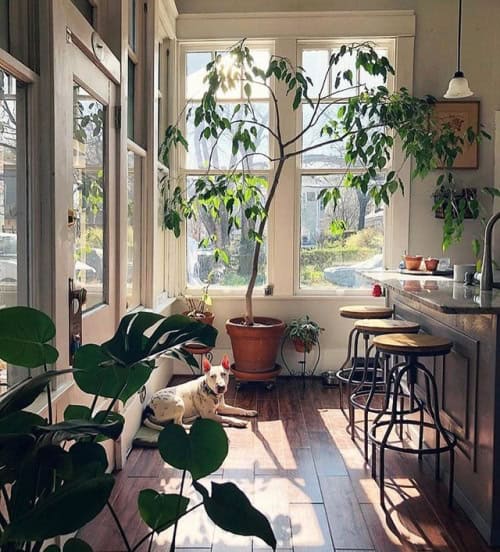
Even if you haven’t spent a lot of time browsing through Instagram photos, chances are, you’re probably familiar with the idea of a “statement plant”. Essentially, these plants are just large plants or tall plants —such as indoor trees—that have a lot of impact on the area around them.
Mastering how to decorate living room with plants doesn’t necessarily require using large statement plants. Still, for most living rooms, I find that having at least one statement plant can help give a room a lot of life without necessarily needing to add in a plethora of smaller plants.
Another benefit is that large plants tend to be hardy, making them reliable in less-than-optimal growing conditions. There are many different large plants that I like, but if you only have space for one then I’d suggest going with the Ficus Audrey.
Pro tip: pick up something like this mini humidifier if your plants are suffering from too little humidity!
Small Plants
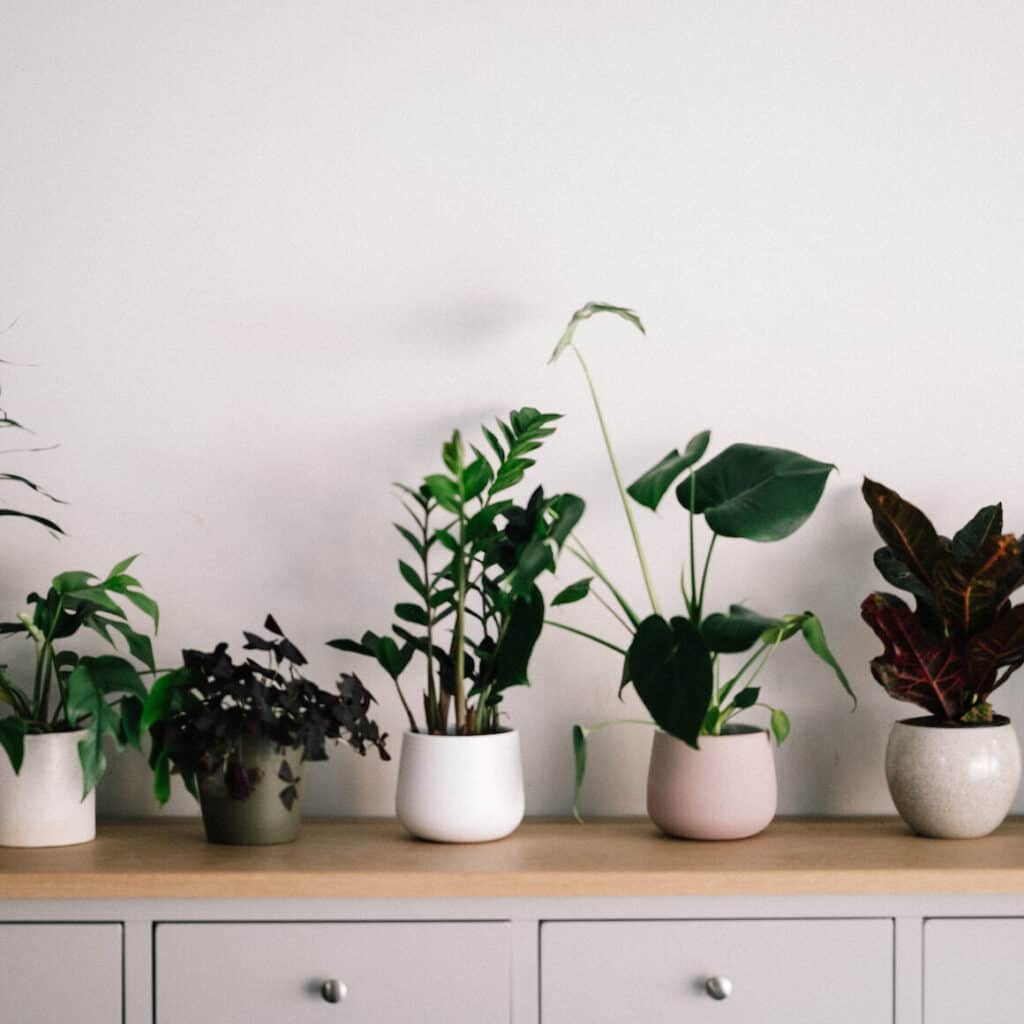
Smaller plants tend to be a bit more fickle than their larger counterparts, but they’re perfect for decorating and revitalizing smaller spaces. Their small stature makes it so that anyone can enjoy them, whether they have a large home or a tiny apartment!
Of course, smaller plants aren’t all the same size. You can use this to your advantage. I particularly like arranging the plants by height, which gives a sense of visual flow and lets you enjoy all the plants at once.
Succulents are great as more subtle decorations, while flowers are a sure-fire way to make an impression on a room. Looking for something a bit more practical? If so, consider growing small herbs instead.
Color Considerations
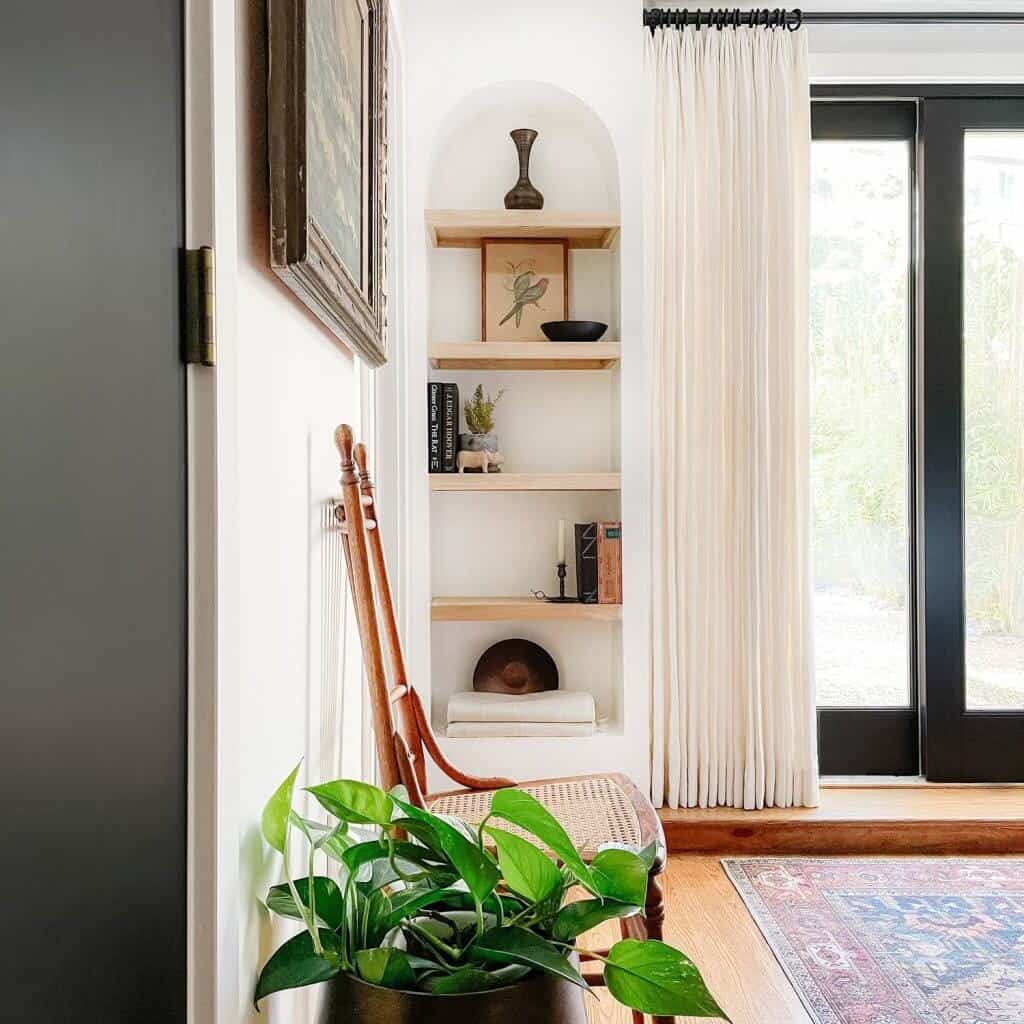
Another important part of mastering how to decorate living room with plants is learning how to optimize your color selection. Fortunately, you can create a lot of visual interest in your room simply by following these two tips!
- Don’t stick solely to green – Having greenery in your room is always nice, but if you want to switch things up a bit, make sure to have different colors of plants. Ideally, your plants should complement your current aesthetic, rather than distract from it, so plan accordingly.
- Choose complementary colors – Simply having some color variation isn’t always enough. You need the colors to complement each other for the full effect. Some popular combinations are blue and orange, red and green, or yellow and purple.
The Perfect Pot

Part of giving your plants the best chance of thriving inside is making sure that you’ve placed them in the correct type of pot. Similarly, part of mastering how to decorate living room with plants is picking the perfect version of said pot type.
Which pots look the best will really depend on the specific plant you have. Basic colors like brown, black, or grey are fine. However, I’d recommend going with a white pot if possible, so long as it aligns with your overall aesthetic.
This will really help your plant “pop” out from its surroundings. Both terracotta and ceramic pots are available in a variety of styles, giving you plenty of options to choose from. Just remember, terracotta pots are better for drainage, while ceramic pots are best for plants that prefer more moisture.
Custom Pots
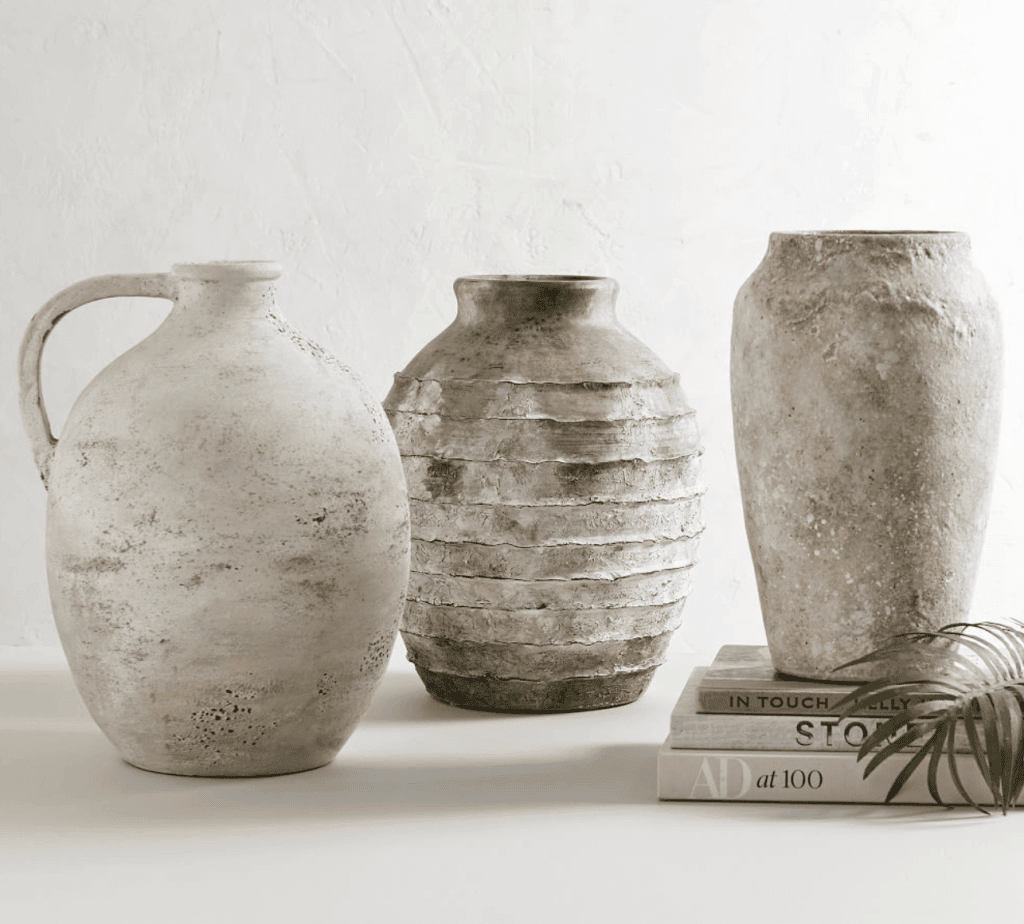
When decorating, interior designers try to optimize every little minute detail to achieve the perfect aesthetic. You can do the same thing with your indoor plants by opting for a custom pot!
With options like engravings, painted designs, custom sizes, and unique shapes to choose from, you shouldn’t have any trouble finding a pot that complements your plant perfectly. Even better, consider getting a basic pot and painting it yourself for a truly personalized design and feel.
You Don’t Need a Green Thumb to Decorate with Plants!
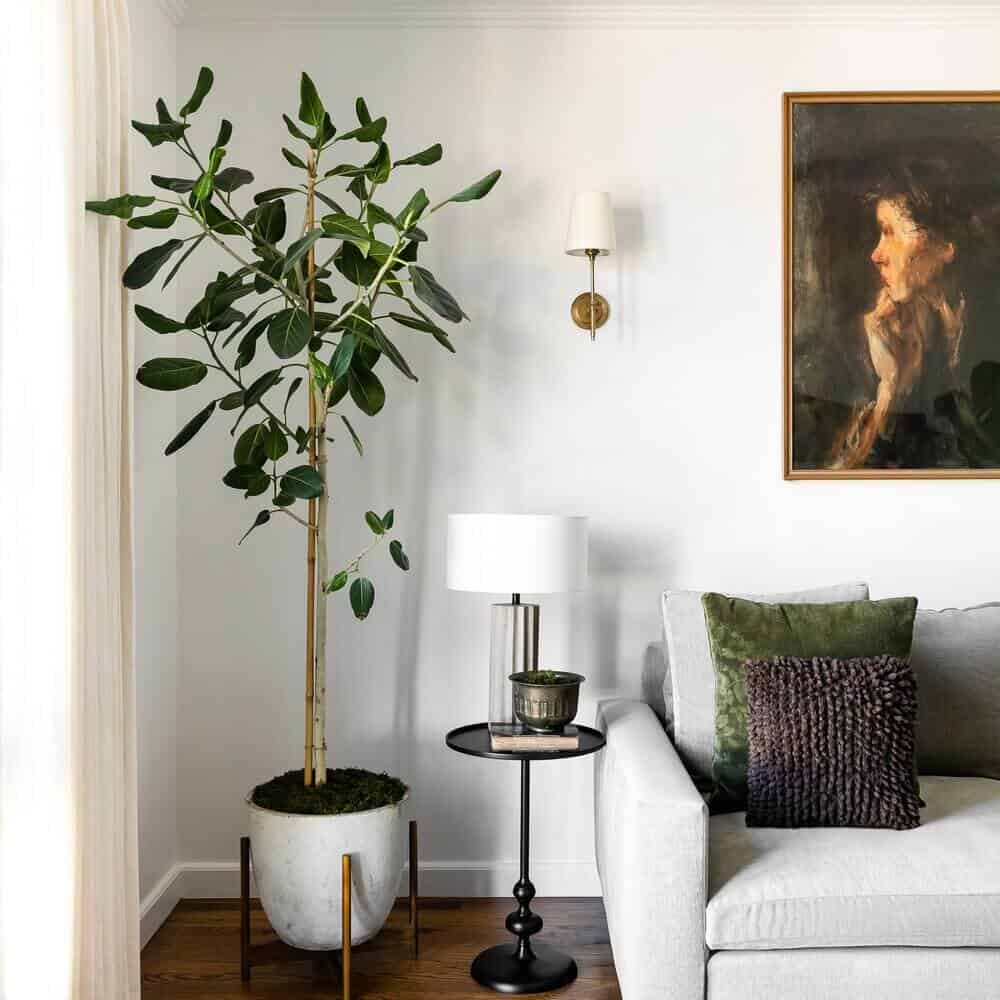
In fact, some of the best plants are the easiest to take care of. While I always encourage people to do their own research before going out and buying plants, don’t feel like your options are severely limited if you haven’t had much luck with plants in the past.
With a bit of research, diligence, and a watering schedule in place, you’ll not only know how to decorate living room with plants, but also how to keep them looking amazing for years to come.
So, did you enjoy today’s list of plant-based living room decorating tips? If so, did you learn any new ones? As always, I’d love to hear from you guys about the progress and projects you’re making in your own home, so be sure to leave me a message in the comments below. See you again soon!
How to Decorating Living Room with Plants (FAQs)
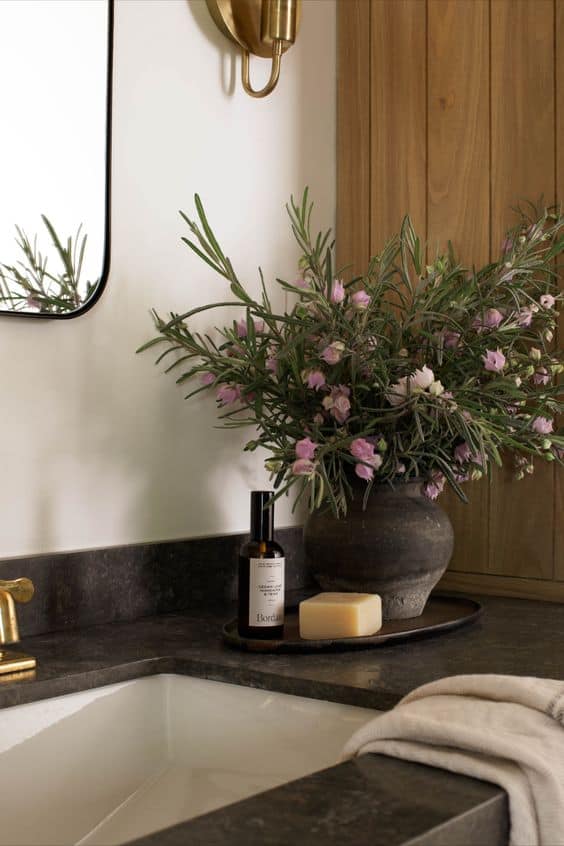
Where is the best place to put plants in the living room?
Ideally, you’ll want to put your plants next to, near, or inside of a window so that they can have access to natural light. If natural light simply isn’t an option for your living room, consider placing a grow light above your plant stand to help your plants meet their lighting needs.
Do houseplants help with anxiety?
It depends on who you ask, but most scientists agree that plants can help reduce depression, stress, and anxiety. Technically, any plant can work for this, but I’d say that the best indoor plants for reducing anxiety would be things like Lavender, English Ivy, or Aloe Vera.
What not to do with plants?
There are many different ways to hurt a houseplant, and often, people do these without even realizing what they’re doing wrong. Overwatering, overexposure to sunlight, constant relocation, over-fertilization, and using the wrong pot size are all common mistakes that can be easily avoided.
How do I make my indoor plants happy?
Plants need four main things to survive: light, water, the proper humidity, and the proper temperatures. This might seem like a lot to keep track of, but the good news is that these factors are very easy to control indoors. I find that using an indoor weather station is the best way to track humidity and temperatures. Lighting simply comes down to placement, and water can be addressed by establishing a consistent watering schedule.
What do you put under indoor plants?
Ah, yes. Drainage for indoor house plants. It can be quite a pain, but fortunately, there are a few things that you can use to help minimize spills and maximize drainage. My favorites? Gravel, perlite, and sand. Put your choice of these on top of a coffee filter in the bottom of your pot, before placing dirt on top. Place a saucer underneath the pot to collect any dripping water, and you’ll have the perfect indoor drainage solution.
Do interior designers use fake plants?
All the time, yes! Professionals use them as a way to beautify a living space without needing to commit to any long-term maintenance needs that real plants would have. You can use the same method in your home to achieve the same results, but I would suggest mixing the real ones with the fake ones if you can.



